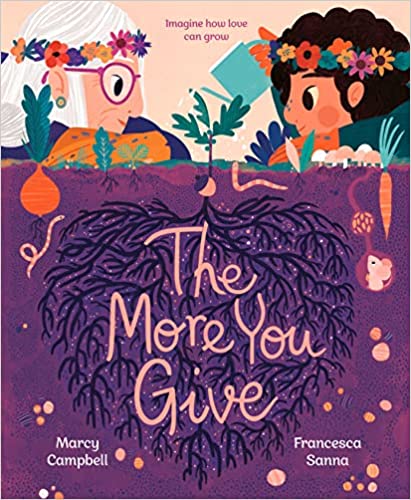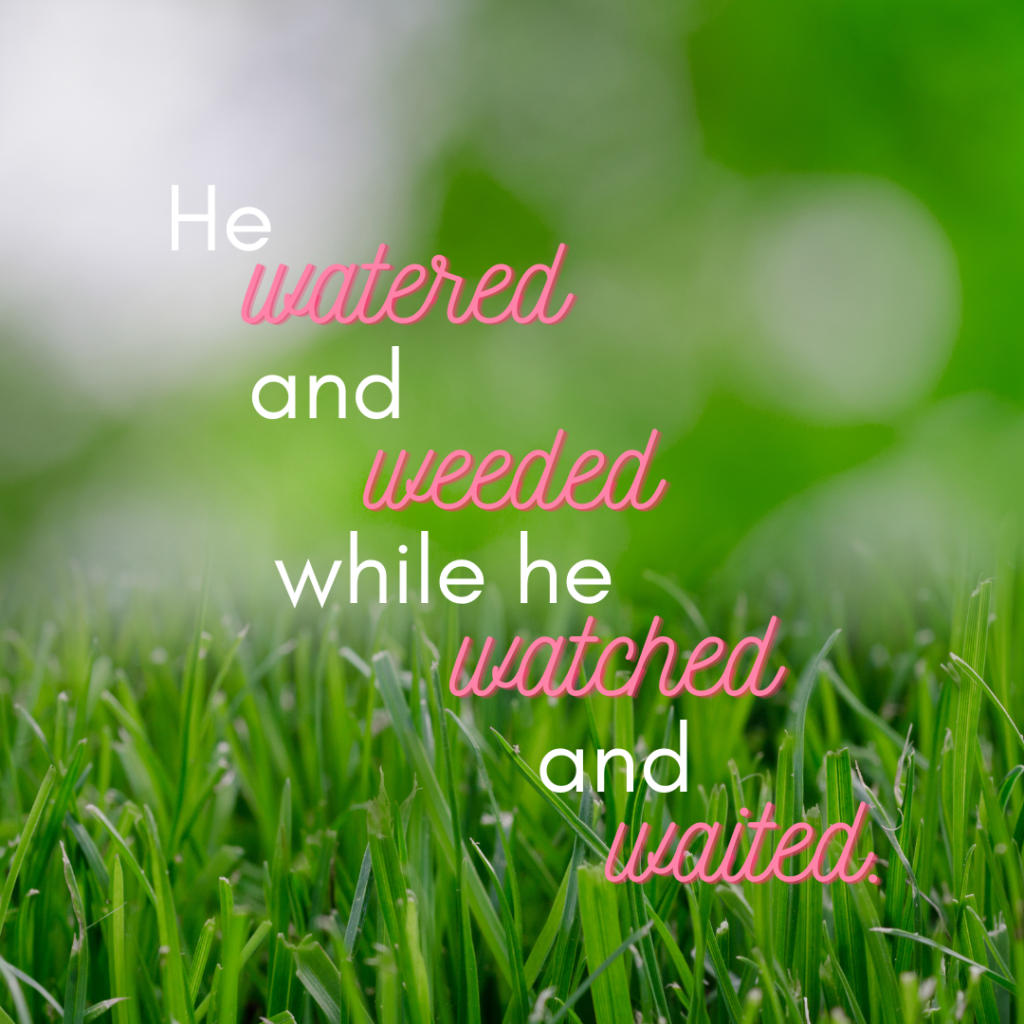An inspiring picture book that shows the power of giving to enrich your life and deepen your relationships.

Why I Picked It Up
This one was #bookmail from Penguin Random House!! Shortly after receiving this opportunity, I saw that Marcy Campbell was also the author of one of my favorite picture Books, Adrian Simcox Does Not Have a Horse. That, coupled with the lovely (and quite necessary) title, I was hooked. The More You Give will be available on August 2, 2022.
Why I Finished It
It’s just so sweet! Human beings, in general, should keep the title words in mind. We should listen and love. The More You Give is a touching story about the love between a parent or grandparent and their child. Beyond that, it is about how to share love intangibly and how that grows and builds from within. Love is at the heart of this story, which illustrates the close family relationships that continue to grow. Eventually, the love passed down from generation to generation helps to grow a strong, loving community.
Who I Would Give It To
Honestly, we can all use this book at this point. After a few minutes of listening to the news and getting worked up, this book made me smile and think of what is most important. I sincerely request, that as parents and teachers, we share this picture book with anyone and everyone!
Integration Ideas
Theme and Making Connections
Love. Before reading the story, ask students to define what love means. Quite honestly, this is not an easy word to define for anyone. Write down the responses students provide. After reading, ask students what the characters do to show love. Students will probably start by talking about what is explicitly stated in the book, such as piggyback rides, hugs, wisdom, etc. Guide the students to talk about things not explicitly said, such as spending time together, doing things for each other, and enjoying each other’s company. As students share answers, ask them to explain how that action shares love and how it is something they have experienced in life or read in another book.
As a class, create a thematic statement. Tell students that the theme topic is love. To create a thematic statement, we have to think about what the author teaches us about love. Let the class grow a sentence or two together. The sentence might be: “Love builds a strong community” or “love helps us grow and love life.” Use this sentence stem:

After students are satisfied with their sentence(s), then cross off “the author believes that”.
Alliteration and Writing Figurative Language
Alliteration is not a main component of The More You Give, but there are definitely pockets of it, especially with w. Alliteration is typically used to highlight the importance of the message or enhance its musicality. As I read the repeated w sound, I stopped and thought. I find the repetition of w sound calming. Authors sometimes use alliteration to create a mood. I believe this is accomplished here. I kept going back to this page:
“He watered and weeded while he watched and wondered.”
It is beautiful on its own. With younger students, you can easily discuss the sound and practice forming your mouth correctly to pronounce w. You can brainstorm other w words and create your own sentences. With older students, I will ask, “Why do you think the author repeated this sound?” “How does this alliteration create a feeling or mood?” Ask the older students to try alliteration in their own writing.

- What is a main word in your story? (The main word for a story about a baseball game, might be the crowd cheering.)
- What mood do you want to set? (Joyful, peaceful, panicked, lonely, etc.)
- What letter sound helps make that point?
- Brainstorm words with that initial sound.
- Write a sentence using three or more of those words.
- Put it in your writing.
Add a tech element: Use Canva or another design tool to create a graphic that captures the mood of your sentence to serve as a backdrop for the words. Incorporate graphic design/media literacy aspect as students explore colors and images and experiment with combining them.
Narrative Writing – Generating Ideas
This story has a ton of different personal experiences that are all about connections with family members. Use this text as a way to encourage students to think about special moments they have had with family members.
After reading the text, have students explain moments that were shared in the story. I love that all of the shared moments in this text are simple and ordinary. There are piggyback rides, planting trees, bedtime stories, picking fruit, and more. Then ask the students about their favorite things to do with their family members. I always remind students of all possible family members and then have them think of their favorite thing to do with them. I always like to share mine too, which are watching sports with my son Jack, baking with my son Cole, and doing puzzles with my son Rhys.
Once the students brainstorm some ideas, I then have them choose one and think of the beginning, middle, and end of that experience.






Leave a Reply